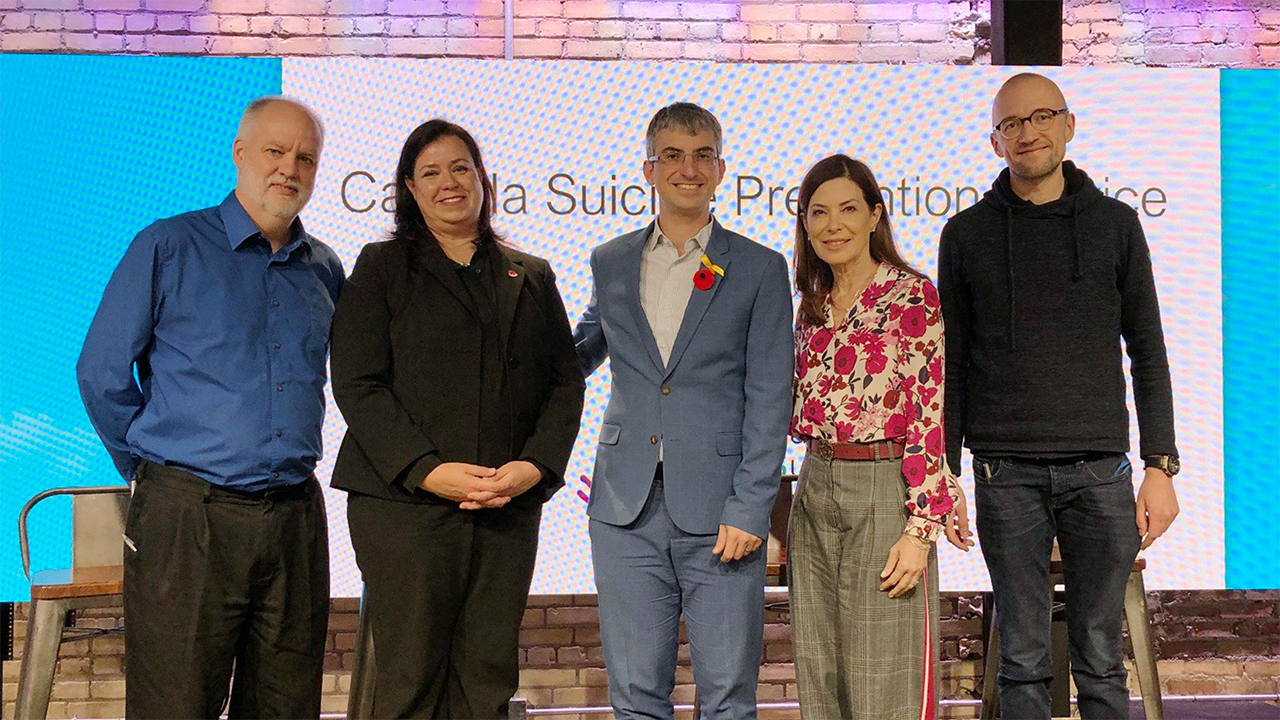Sunnybrook hosts Canada's 2nd Forum on Media and Suicide
If you need help in an emergency please call 911 or visit your local emergency department.
- Phone: toll-free 1-833-456-4566
- Text: 45645
- Chat: crisisservicescanada.ca
Mental health experts and journalists from around the country and beyond gathered in-person and online for a discussion on the importance of responsible reporting on the topic of suicide, at Canada’s 2nd Forum on Media and Suicide.
“Many Canadian journalists and social media organizations, along with public and mental health experts, are invested in improving our conversation and coverage of suicide,” says Dr. Mark Sinyor, Sunnybrook psychiatrist and Forum host. “This discussion will go a long way towards the goal of helping to ensure safe, non-stigmatizing, and accurate reporting on this important topic.”
The event, held on November 9, 2018, was co-sponsored by the Canadian Association on Suicide Prevention, the Mental Health Commision of Canada, The Erika Legacy Foundation and Toronto Public Health.
Speakers included: Master of Ceremonies, Dr. Marla Shapiro, CTV’s Medical Consulant; Dr. Eileen De Villa, Toronto Medical Officer of Health; André Picard, Health Reporter for the Globe & Mail; Michele Austin, Head of Government, Public Policy and Philanthropy from Twitter Canada.
The keynote address was given by Dr. Thomas Niederkrotenthaler, from the Medical University of Vienna, who coined the term the “Papageno effect”, which identifies the positive impact that media reports can have on vulnerable people when they include stories of coping and resilience in the face of suicide.
“We know that certain kinds of unsafe reporting can unfortunately lead to increases in suicides,” explains Dr. Sinyor. “But it turns out that people who may be contemplating suicide can be influenced, and often are, by reports about people seeking help and getting the right treatment. When these stories of resilience are published, suicide rates can actually go down.”
Forum first: including social media
The event also included social media for the first time, expanding the conversation beyond traditional media outlets. Those who joined online were able to Skype in their questions during the discussion.
“How we talk about suicide can have positive or negative effects on vulnerable people,” says Dr. Sinyor. “Social media can spread truthful information about suicide, as well as share and facilitate access to resources for those who are in suicidal crises. Reaching journalists and others who report on traditional as well as social media will help give us the best chance of saving lives.”
How the conversation started and its impact
In 2015, Sunnybrook, the Globe and Mail and Toronto Public Health organized Canada’s first forum to begin a conversation about media and suicide reporting. This led to an updated Canadian Psychiatric Association Position Paper on Media Guidelines for Reporting on Suicide, co-authored by psychiatrists and journalists which was published in March 2018.
Dr. Sinyor, is lead author of the new media recommendations, and the lead investigator of the largest Canadian study investigating the impact of reporting of suicide in the media.
The conversation continues…
“I hope that the media understand that the mental health community needs their help,” says Dr. Sinyor.
Historically, suicide was often not talked about and now that it is part of the discussion, Dr. Sinyor believes it is an opportunity to shape a more positive conversation, raise awareness, and reduce the stigma around mental illness.
“We know that the media will continue to report on newsworthy suicide events including deaths, but the hope is that they include context in their stories by educating people that the overwhelming majority of people who think about suicide do not die by suicide,” says Dr. Sinyor. “Our population needs to understand that suicide arises from treatable illnesses and that if people are contemplating suicide, they should seek help. Every person counts. We care and there is hope.”






